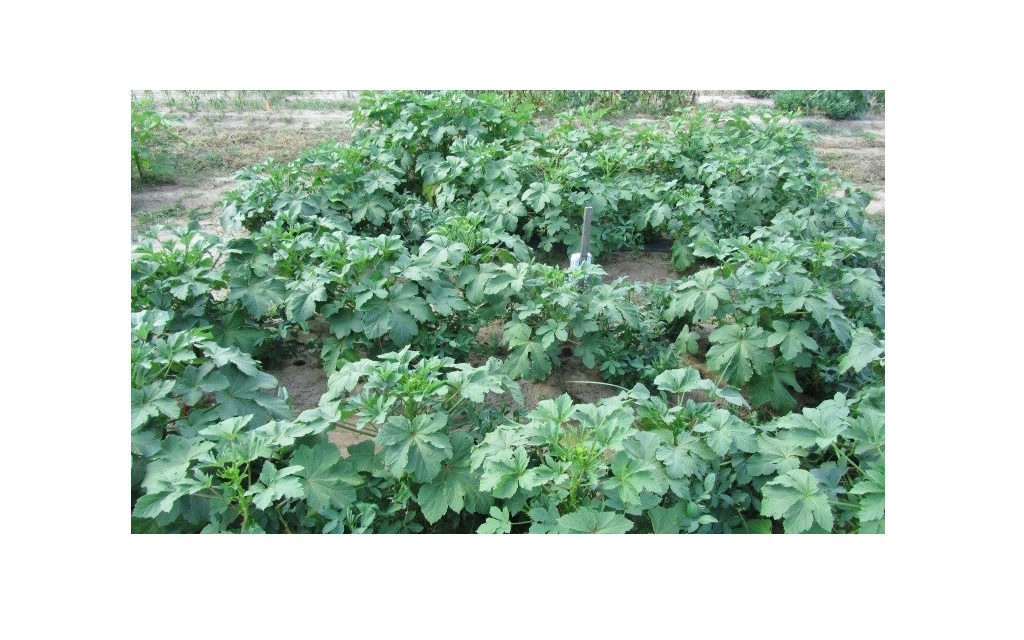By: Adam Russell
The old ways could be the best ways when it comes to small-acreage vegetable production, according to a newly published article available through the Texas A&M AgriLife Extension Service.
Dr. Jose Franco, a U.S. Department of Agriculture Agriculture Research Service agroecologist, Mandan, North Dakota, conducted the two-year study of intercropping at the Texas A&M University Horticulture Farm in Bryan for his doctoral dissertation under the guidance of Dr. Astrid Volder, former Texas A&M University faculty and current University of California at Davis plant physiologist; Dr. Stephen King, a former professor and vegetable breeder with Texas A&M department of horticultural sciences, College Station; and Dr. Joe Masabni, AgriLife Extension small acreage horticulturist, Overton.
The publication, Harvest Gains from Intercropping, is available in PDF form on the AgriLife Extension bookstore website at http://bit.ly/2imN0Hd.
Intercropping is a form of companion cropping where two or more vegetable or non-vegetable crops are grown together to increase production from the garden, said Franco. The “three sisters” intercropping system of squash, beans and corn was practiced by Native Americans for centuries and is a well-documented example of a multi-layered agroecosystem.
“The idea behind companion cropping is to create a mutually beneficial ecosystem and functionally diverse plant community to increase individual plant production,” he said. “When we have different crops that fill different functional niches, we find diverse planting can produce more overall and decrease input costs.”
The study included intercropping peanuts, watermelon, okra, cowpea and hot peppers.
Peanuts and cowpeas are legumes, which fix nitrogen from the air and supply it as nitrates to companion plants, Masabni said. Watermelons were chosen as a smother crop to suppress weeds and provide soil shading to conserve water moisture. Okra was chosen for its tall growth form and as a potential pollinator attractor due to its large showy flowers. Hot peppers were chosen as a potential pest barrier.
Franco utilized five treatments to test the intercropping system within the same rows, including a row of peanuts and watermelons; peanuts, watermelons and okra; peanuts, watermelon, okra and cowpeas; a row of all five plant species; and a strip intercropping system of peanuts and watermelons consisting of alternating single rows.
Plant densities were kept constant across the plots regardless of species, Franco said, and individual plants were spaced about 12 inches apart in a staggered row pattern so each plant was neighbored by an individual of a different species and a leguminous species.
“We found that three to four species consistently yielded higher per-unit land area compared to crops grown alone,” Franco said. “We reduced inputs like fertilizers and herbicides. We actually used minimal fertilizer and no herbicides, and the only major input we utilized was irrigation. So we enhanced resource use efficiency by planting the crops together.”
Masabni said intercropping is an ideal method for small-acreage growers with limited land space.
“The results are encouraging for these growers because we proved you can get better yields if you choose the right crop combinations of nitrogen fixing legumes, tall plants and smother crops,” he said. “It makes me wonder how they knew to do this, but Native Americans knew exactly what they were doing, and we’ve proved the concept works.”
Franco said there are limits to implementation and production when it comes to intercropping.
The study showed that too few or too many plant species can reduce the effectiveness of intercropping. The species chosen are also an important factor that could increase or decrease the method’s effectiveness, Franco said.
“Intercropping with three to four species did best,” he said. “Productivity declined with one or two and more than four, and the plots with peppers showed an overall decline in productivity, so choosing the right combination is important.”
Intercropping is also a more complex cropping system and requires more intense planning, he said. At this point the concept is also only applicable on a small scale.
But Franco considers intercropping an important concept for broader application in the future because it reduces input costs for producers, especially fertilizers, herbicides and pesticides, which add environmental concerns as well, and conserves water.
“There are obstacles, but with all the shifts toward sustainability, it is imperative that we find ways to apply intercropping at larger scales, ones that are manageable for producers,” he said. “It’s designed as a model system. It’s best to interchange crops with other species in test plots to see what combination works for the operation’s location and the production goals.”





